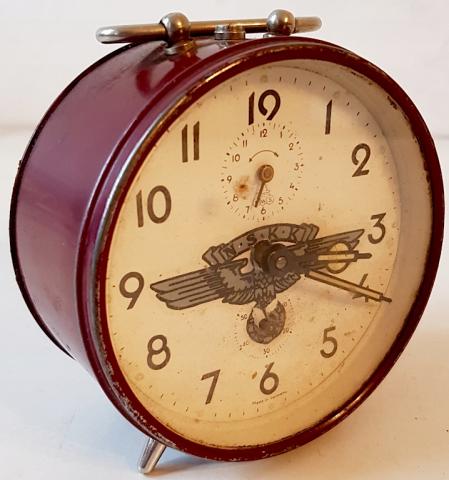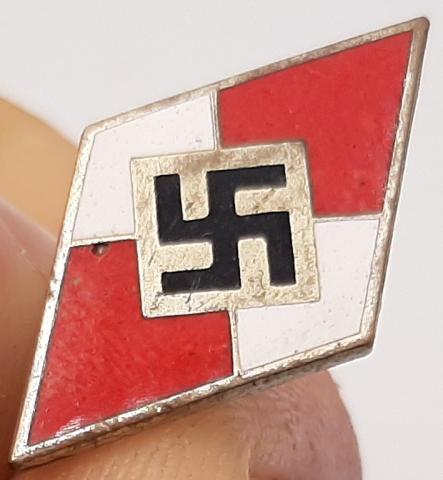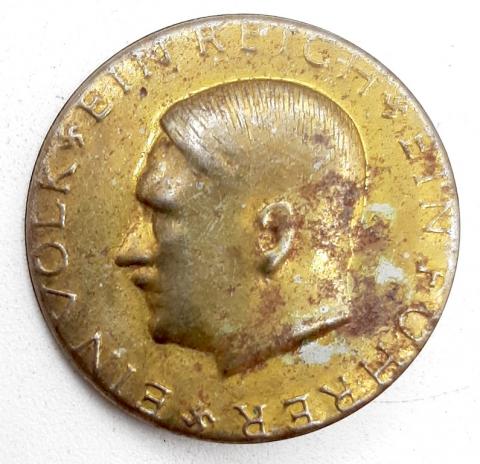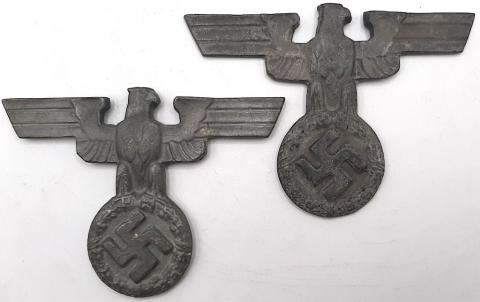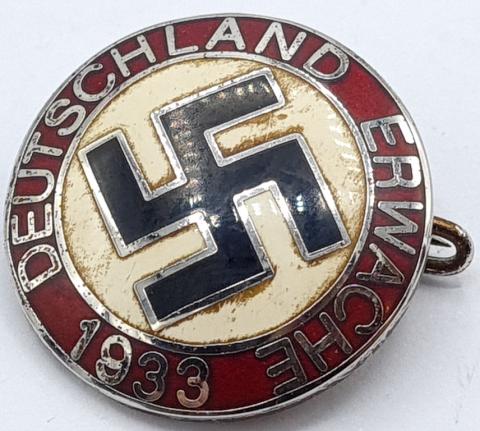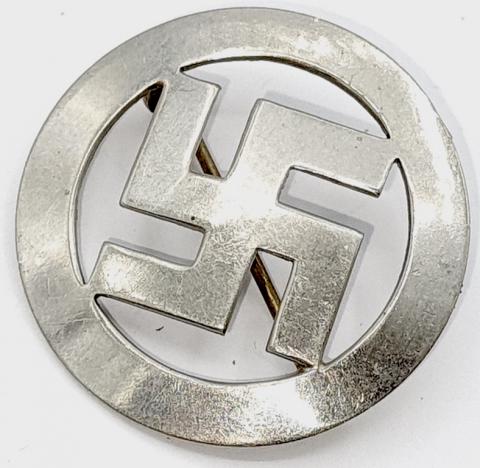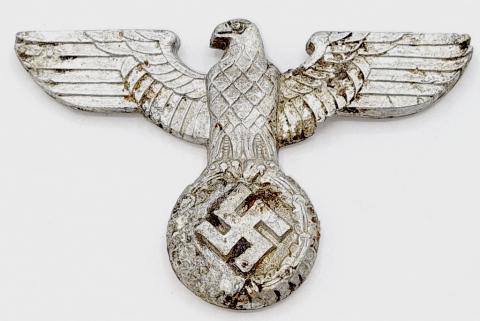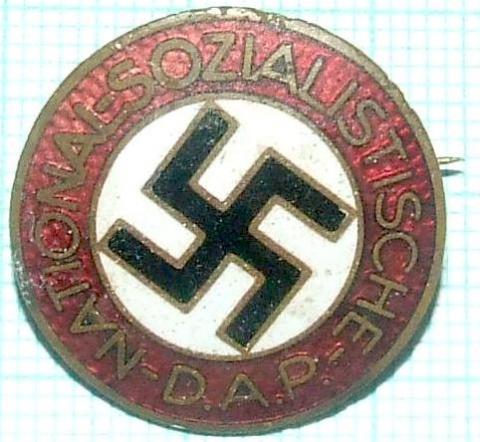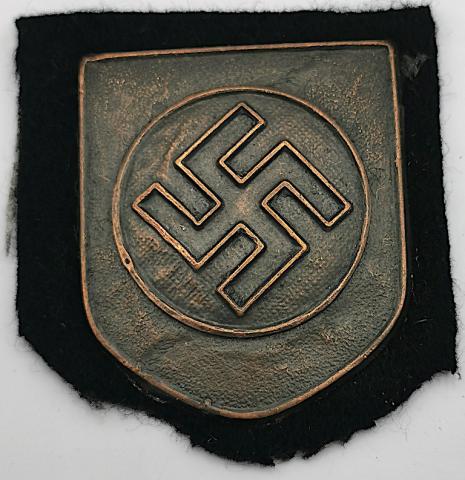NSKK N.S.K.K MOTORCYCLE CLUB THIRD REICH ALARM CLOCK WITH LOGO
Sometime in August 1938, the NSKK began its services as a courier for Organization Todt (OT) during the construction of the Westwall. Members of the NSKK transported classified documents, important reports and announcements, construction plans, and routine papers to and from the organization's headquarters. Exemplary services provided to the Organization Todt resulted in Hühnlein being given oversight for the transportation needs related to the task. Over 15,000 trucks went into operation, delivering building materials to the 22,000 individual construction sites of the Westwall. Daily movements of the 200,000 workers required over 5,000 buses to get the workers to and from the construction sites.
Concomitant to the support provided to Organization Todt during the construction of the Westwall by the NSKK, the organization was also tasked by Hitler's chief architect, Albert Speer. He founded a unit known as the "Transport Brigade Speer", which was organized under the auspices of military considerations, dividing them accordingly into regiments, divisions, companies and platoons. On 27 January 1939, Hitler made the NSKK the sole authority for motor-vehicle related military training. Shortly thereafter, the NSKK was divided into 5 main groups and 23 subordinate motor groups. Approximate manpower strength of the NSKK reached nearly half a million men at this stage with its leadership operating primarily out of Munich and Berlin.
With the outbreak of World War II in Europe on 1 September 1939, the National Socialist Motor Corps became a target for army recruitment, since NSKK members possessed knowledge of motorized transport, a coveted skill when the bulk of German ground forces relied on horses. The NSKK was used to transport German Army troops, supplies and ammunition. By the time the Second World War began, the NSKK had already trained some 200,000 men at its 21 training facilities.
During field operations in the Eastern Front, the NSKK members of the Transport Brigade Speer followed Army Group South, providing infrastructural backup and replenishment. Members of the Transport Brigade Speer wore either the gray-blue uniform of the Luftwaffe or the brown uniform of Speer's staff. NSKK men working for Organization Todt became members of the "NSKK Transport Brigade Todt", which were further divided into individual motor groups in the occupied territories.
Major units of the NSKK were formed by 1944, operating throughout Germany. There were two full brigades of the NSKK supporting the Luftwaffe; a Motorobergruppe Alpenland in the Austrian Alps; Motorobergruppe Mitte (middle) which operated in Berlin, Franconia, and the Lower Rhine; Motorobergruppe Nord (north) that covered Hamburg, Lower Saxony, the Baltic Sea and Schleswig-Holstein; Motorobergruppe Nordost (northeast) in Danzig, East Prussia, and Wartheland; Motorobergruppe Ost (east) for Leipzig, Lower and Upper Silesia; Motorobergruppe Süd (south) which served Bavaria and Hochland; Motorobergruppe Südwest (southwest) for the Rhine-Moselle, and Swabian regions; Motorobergruppe Südost (southeast) covering the Upper and Lower Danube, Sudetenland; and Motorobergruppe West (west) which was responsible for Hessen, Thuringia, and Westphalia. Moreover, there were also NSKK units assigned to Organization Todt, operating in France, Italy and Russia. Historian Peter Longerich suggests that members of the NSKK along with the para-military police, the Waffen-SS, and the German Army were all culpable in varying degrees for large-scale arrests, torture, and mass executions.

